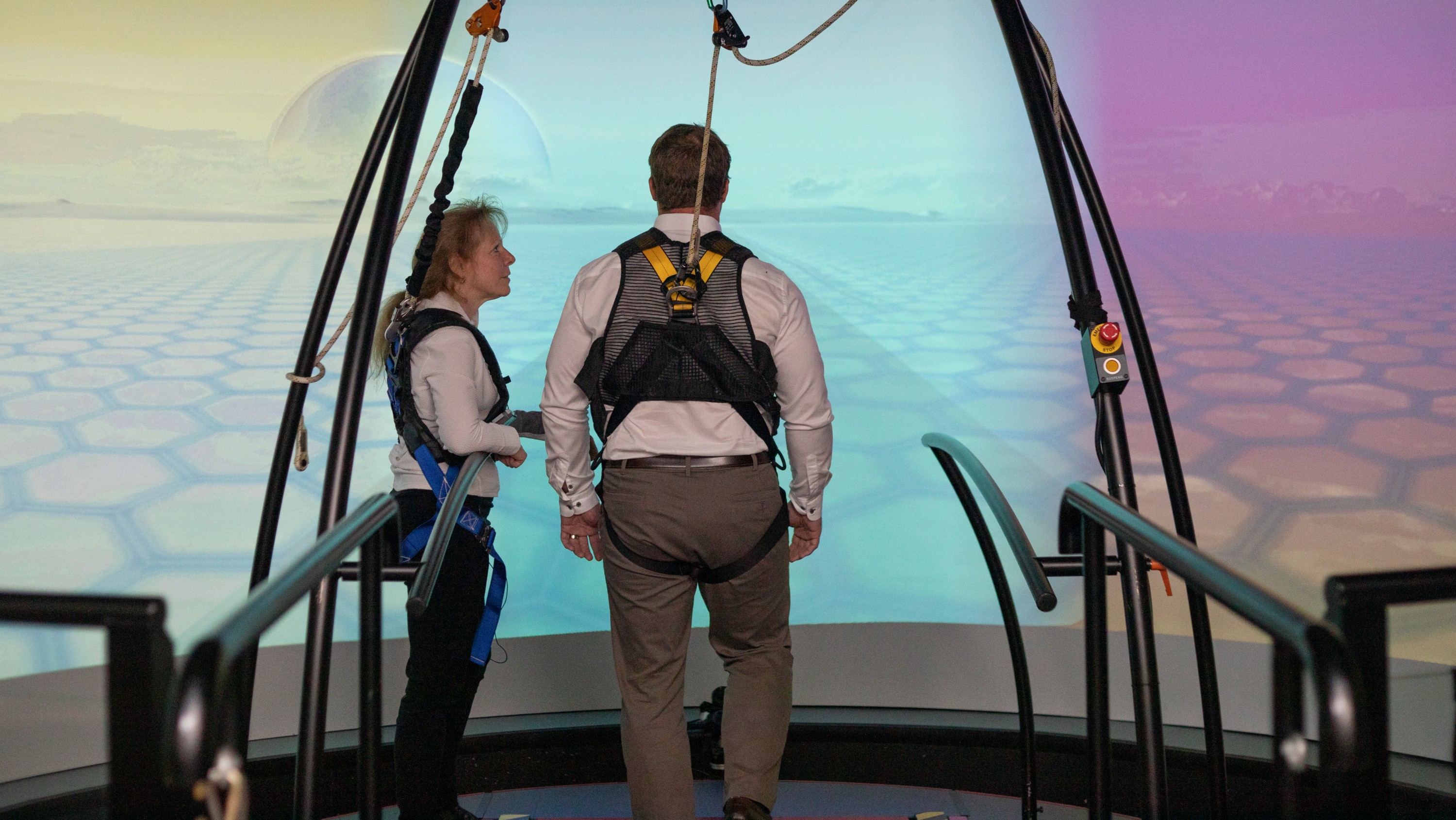More veterans and first responders living with PTSD could eventually have access to a promising virtual reality-supported psychotherapy that provides empowerment and hope, thanks to $3.75 million in new funding from Alberta Advanced Education.
“Today’s announcement is great news for the University of Alberta, and for so many military members, veterans and first responders who will benefit from this investment,” says U of A president Bill Flanagan, who was on hand at an event today at Corbett Hall announcing the new provincial funding for the Heroes in Mind, Advocacy Research Consortium (HiMARC) initiative. “We pride ourselves on applying theoretical research findings to real-world situations so that we can make life better for everyone, and the work being done at HiMARC is a perfect example of that.”
Advancing innovative interventions
One of HiMARC’s specialties is 3MDR, an immersive virtual reality-supported psychotherapy, which is “a multimodal intervention that integrates a variety of evidence-based interventions into one,” says Suzette Brémault-Phillips, director of HiMARC and professor in the Faculty of Rehabilitation Medicine.
People receiving 3MDR therapy walk on a treadmill while viewing a large screen with self-selected images of the specific trauma they’re attempting to work through. 3MDR has been shown to engage and help people with treatment-resistant PTSD who haven’t had success with other approaches.
“The personalization, the mobilization, the empowerment and the hope that it gives make it quite unique and very different from any other therapy,” says Brémault-Phillips.
With the new funding, HiMARC plans to put key equipment in place that will allow for the delivery of the new therapy, to train and prepare therapists to deliver it, and to implement a clinical research trial to provide further evidence of its effectiveness. They also intend to scale up and spread 3MDR, with the hope of one day implementing the therapy as widely as possible and integrating it into care for different populations.
HiMARC will also be “looking at researching other ways 3MDR might be delivered, and finding out at what point in someone’s treatment or life course they might receive 3MDR,” says Brémault-Phillips.
This includes answering questions such as whether it could as effectively be delivered remotely using augmented reality, implemented in group settings, or used to either build resilience or intervene early, even before a PTSD diagnosis. They’re also looking at ways to make the therapy more cost-effective by using made-in-Alberta solutions for the equipment.
Supporting military and veteran-connected campuses
The funding will also support the continuation and growth of the Military and Veteran Friendly Campus initiative, which began with a two-year pilot project that will end this December.
“There’s a new imperative across the Canadian Armed Forces as well as Veterans Affairs Canada to support those who serve and have served across their whole journey,” says Brémault-Phillips.
As Brémault-Phillips explains, the U of A initiative supports that new imperative by helping military members be ready to serve, and veterans transition from service to the civilian world. Key to their success is post-secondary education and measures including peer support, study groups and specialized advising tailored to their talents and needs.
HiMARC is creating a toolkit of best practices that other post-secondary institutions can implement should they choose to become military- and veteran-connected. Brémault-Phillips says that plans are underway to “catalyze a community of practice, a network of military and veteran-connected campuses across Alberta, to make Alberta a destination of choice for military members and veterans to be able to pursue post-secondary education.”
“The University of Alberta hosts some of the best researchers in the world, and we are very proud to support the HiMARC initiative and the work they are doing to improve mental health outcomes for veterans and military personnel,” says Demetrios Nicolaides, minister of advanced education.
HiMARC also recently named His Honour Zaheer Lakhani as its patron.
“His support of HiMARC recognizes the value and importance of the mission HiMARC has in supporting those who serve and have served, want to be resilient, or want to recover and reach their full potential,” says Brémault-Phillips.
“We’re grateful for the opportunity to continue to advance these initiatives,” she adds. “We envision them in days ahead being of tremendous value to Albertans, further shining a light on the innovative spirit of Alberta.”
The founding members of HiMARC are the Faculty of Rehabilitation Medicine, The Royal Canadian Legion Alberta - NWT Command, Northern Alberta Institute of Technology, Canadian Armed Forces - 3rd Division, Glenrose Rehabilitation Hospital, Department of National Defence, Veterans Affairs Canada, Alberta Health Services and Covenant Health.
